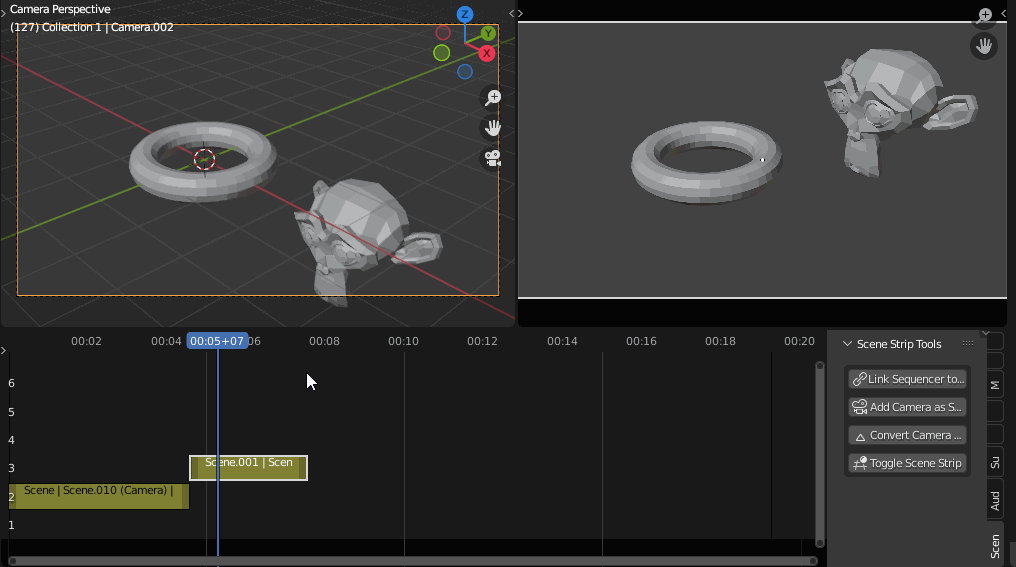As a workaround, @Shubhampatilart found out that making a “linked to” copy of the current scene, and assigning that scene to a scene strip in the current scene, will allow for edits of the objects in 3d view, to also update in the vse preview(if the cache is switched off and vse is constantly updating by ex. playing).
This version of scene strip tools will automatically assign the linked scene copies: GitHub - tin2tin/Scene_Strip_Tools at linked_copy
And it will allow camera switching in the 3d view from the sequencer:

This method of a “virtual scene” only work for the 3d view, since the objects of ex. the vse or the compositor are not IDs or Data Blocks.